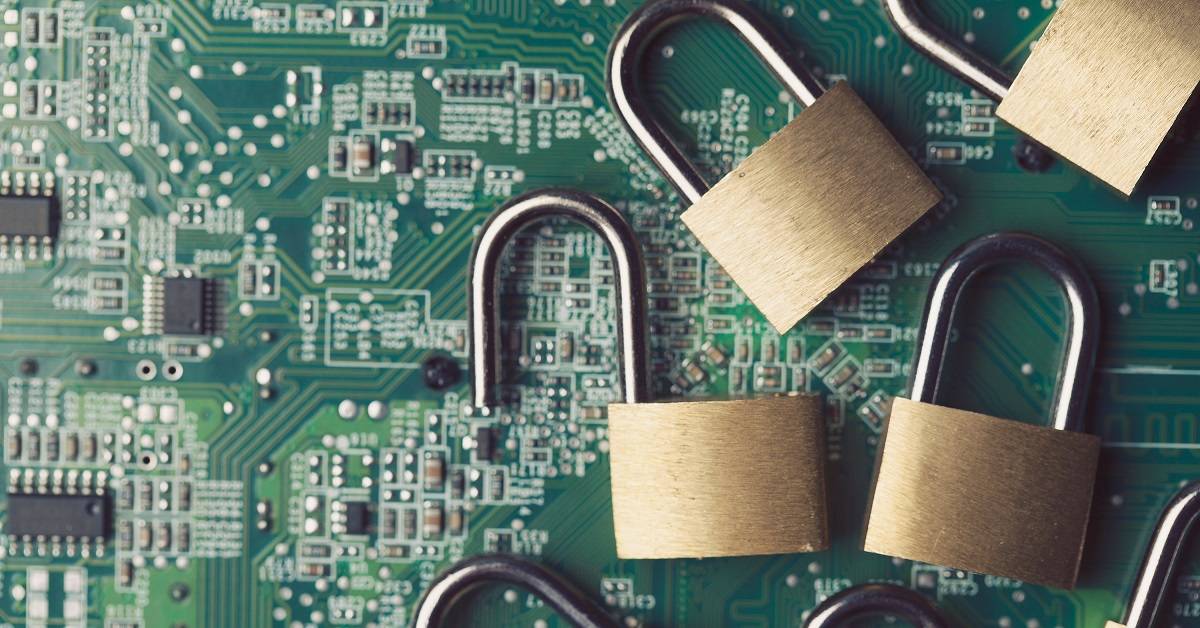Best Practices in Computer System Security
Securing the physical perimeter of computer equipment appears at the top of many definitions of computer system security, so it is surprising that “virtual” comes first and “actual” is so often left for last when enterprises take steps to ensure the integrity of data and to prevent unauthorized access.
Think of the urgency applied to computer access control and authentication. Password systems and other online access control were treated as step-one, when Web use became widespread and a critical priority was placed on secure transactions so that e-commerce could progress. Isn’t it remarkable, then, that computer system security has placed so little emphasis on protecting the physical access to the ports and connectors that make computers into data networks and information systems?
Beyond Countermeasures
In addition to the paradox of placing only a second priority on the actual, visible, physical computer system security on which we all depend – putting actual security measures after the plethora of virtual protections based on software and programming – consider, too, that most of the online solutions react to incursions, rather than prevent them. Yes, the online and programming approaches to computer system security are mainly designed to counterattack, rather than to prevent incursions in the first place.
Sometimes stepping back to more primitive times can put the picture in clearer perspective. Conflicts throughout the ages have taught the people we depend on for security that maintaining the initiative is a priority of the highest order in combat. Counterattacks are important, but they are in fact simply a way of regaining the initiative. Why lose it in the first place? Conceding this initiative is not necessary for computer system security. In fact, it is quite the opposite.
It doesn’t make much logical sense that actual, preventative computer system security would come after reactive programs and software. The only explanation might be sociological, rather than technical.
A Cultural Transformation
Imagine the change in culture when horses gave way to automobiles. What changed among human beings went far beyond where they sat when they traveled. A whole set of skills and awareness – perhaps a whole world view – went from being a widespread necessity to being simply the realm of enthusiasts. Equestrian culture went from being a broad-based, enabling factor in how the world worked to being a hobby, and it almost evaporated in only a couple of generations. When that happened, historians noticed that mechanics became a kind of hero subculture. Streets were named after them. You couldn’t get around them or do without them. They held the keys and controls to the new way of getting along in the world.
So it was, during the digital revolution, when computer system security became a requirement for business, industry, government, and everyday life. “The IT people” were initially drawn from among offbeat computer enthusiasts – people whose skill sets might not have been considered even attractive, much less vital – only a year or two before the transition began. Referring to this vital subculture as “geeks” is a cliché by now, but those who lived and worked before, during, and after this important evolution can testify that, even in large corporations, the person who initially came to your office to solve your mysterious computer issue was usually some executive’s unusual nephew, rather than one of the trained-and-groomed junior executives who had previously been seen as the “bright young things” or the future of the company.
When geeks, became the enablers of life as we know it – the computer system security experts – a period ensued when they called the shots, because who could contradict them? Because their real importance was so great, their influence was no less conspicuous. As this new world progressed, those skills and that orientation ceased to be a sub-culture. Just as the digital world became our reality, the geek became a part of us all.
Thinking that through, it becomes easier to understand why the first wave of computer system security was based on programming and software, rather than actual, preventative, physical protection. But enough history lesson. What do we do now?
Computer System Security You Can See
With experience and perspective that extends through all the evolutions of computer system security, The Connectivity Center made it our mission to guard the physical points of entry that turn computers into data networks and information systems. We protect ports, connectors, and any other aperture through which contamination or sabotage might introduced to threaten the efficiency and continuity of your operations.
An example of the resources you can depend includes our Smart Keeper collection of computer system security devices. They protect the vital data network connections that empower your information systems and still permit the controlled access that moves your enterprise forward day after day.
Our Link Lock connectors, the Link Lock Hub, and a variety of locking 4K high-speed cables secure ubiquitous USB ports and network connections, and also lock your devices so that they cannot be removed without authorized access. For unlocking them, we offer two kinds of keys, the Enterprise and Professional series of the Smart Keeper USB Port Lock Key.
The Professional Series provides effective control to reach port locks in confined spaces. Key patterns are strictly controlled, yet you can order duplicate keys to suit your own computer system security authorization structure. As a convenient and efficient option, the Professional Series key offers you an ergonomic, retractable housing with anti-static rubber grip, LED light for low visibility work areas, and dual-retractors – main and peripheral – for access to any angle of installation.
Securing the open front door of cybersecurity – the actual points of access – is what we do at The Connectivity Center. Here you’ll find a vast, expertly curated collection of devices to complete that complex perimeter of computer system security, protect the physical connections your system and provide for the secure retention of the devices themselves. The answers here are abundant, and available at any time.





